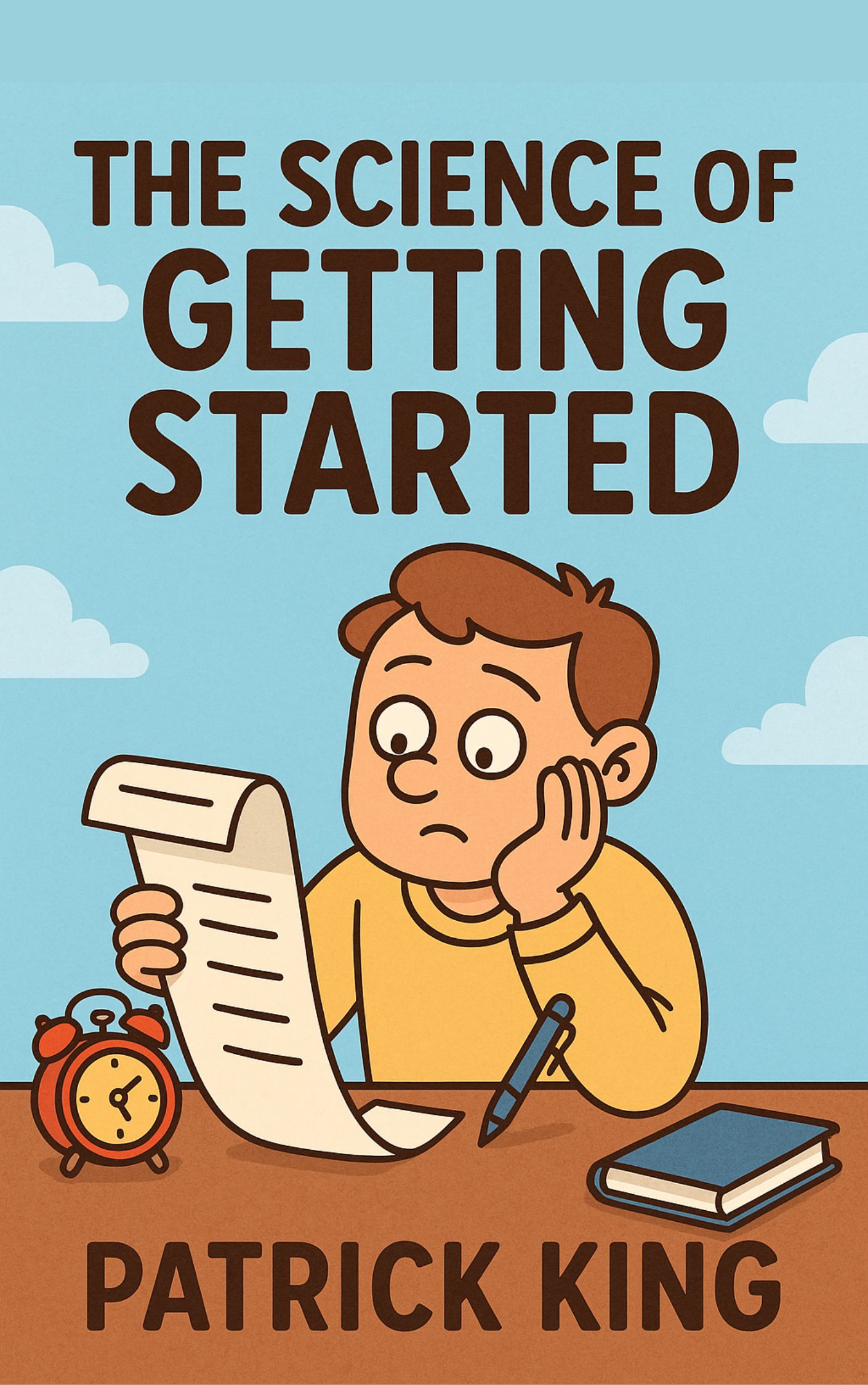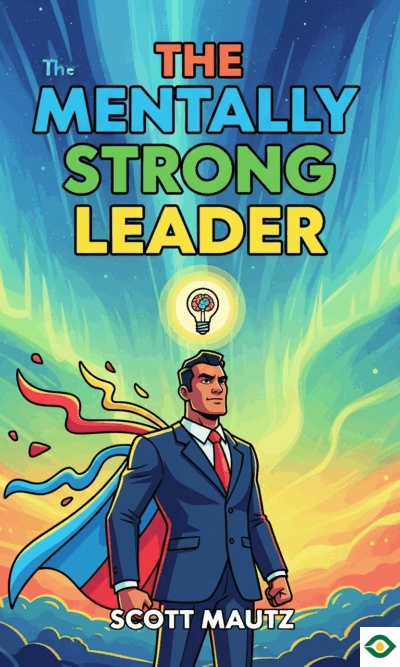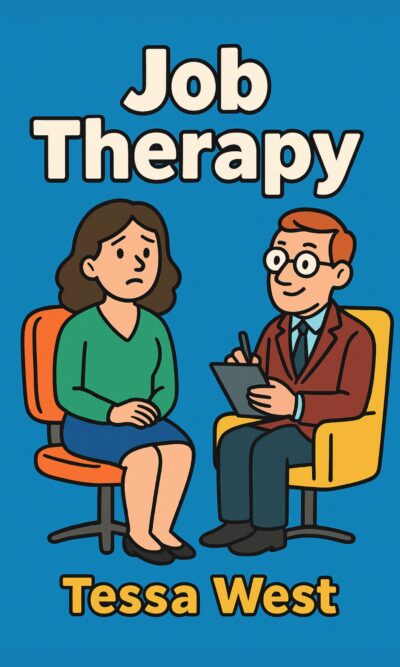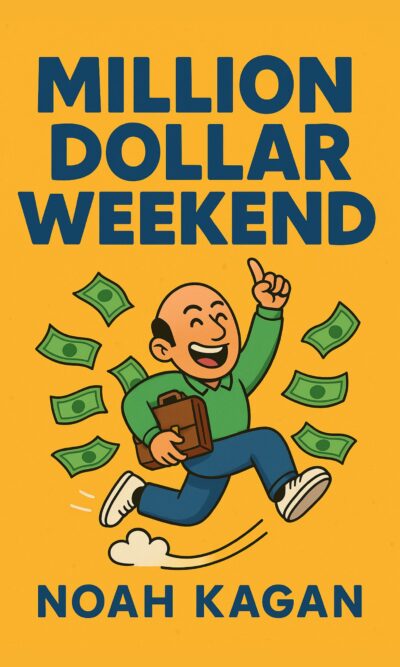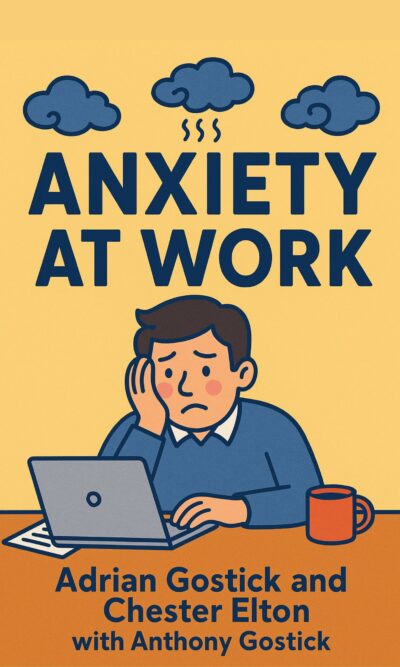Description
Procrastination is something nearly everyone faces at some point. You know there’s a task waiting for you, but somehow you keep finding reasons to avoid it. Instead of starting, you scroll through your phone, watch a video, or convince yourself that tomorrow will be better. The Science of Getting Started by Patrick King dives into why this happens and, more importantly, how to move past it. The book shows that success doesn’t come from waiting for motivation, but from creating it through action.
The story begins with a personal example from the author’s father. He had promised to build a shelf before his child was born, but it took him eight years to finish. What finally worked was breaking the big project into tiny, manageable tasks. Buying nails one week, cutting wood the next, and slowly completing each part made the work less overwhelming. This lesson—that big tasks become easier when divided into small pieces—sets the foundation for everything else in the book.
Why do we procrastinate in the first place? It’s not simply laziness. Procrastination is a mix of psychology, emotions, and brain chemistry. On one side, the limbic system, an older part of the brain, craves quick rewards and immediate pleasure. On the other side, the prefrontal cortex, the rational part, tries to plan and push us toward long-term goals. Most of the time, the limbic system wins because it offers fast relief. Checking social media, eating snacks, or chatting with friends feels good right away, while starting a tough assignment feels stressful.
This creates a cycle. First, you assume the task will be painful. Then you feel discomfort thinking about it. Next, you invent excuses—too tired, too busy, not in the mood. After that, you distract yourself with something that feels productive but isn’t the real task. In the end, you face the consequences of not finishing. This loop keeps repeating until you break it deliberately.
One way to interrupt the cycle is to check your physical and emotional state. The HALT method—hungry, angry, lonely, tired—reminds you that these conditions make procrastination worse. By addressing them, you give yourself a fair chance to act. Another important idea is recognizing traits that lead to delays, such as impulsivity, poor planning, or weak self-monitoring. By noticing these patterns in yourself, you can start correcting them.
The book also explains how indecision feeds procrastination. Too many choices or too much uncertainty can freeze you. Patrick King uses Newton’s laws of motion as a metaphor. An object at rest stays at rest until moved by an outside force. Similarly, you may stay stuck unless you push yourself to begin. This is where the “two-minute rule” helps. Commit to working for just two minutes. Often, once you start, you keep going. Writing one sentence can lead to a whole page. Washing one dish can lead to a clean sink. The first step is always the hardest, but once you break inertia, progress follows.
Focus is another key. Trying to juggle multiple things at once spreads your energy too thin. Switching constantly between tasks feels busy but is actually inefficient. By giving your full attention to one job at a time, you make faster progress. The same principle applies to choices. Too many options can paralyze you, so limit your decisions by setting rules. For example, give yourself a deadline, narrow down your criteria, or choose a default option if nothing stands out.
Another central message is that motivation does not appear before action; it appears after. People often say they’re waiting to feel inspired, but that wait can stretch on forever. Instead, you must begin even if you don’t feel like it. Small wins create momentum, and momentum generates motivation. It’s a chain reaction that works in your favor.
Practical techniques make this easier. Set very small goals, so small they almost feel too easy. If you need to write a research paper, start with the title. If you want to exercise, just put on your workout shoes. Each small action builds a sense of accomplishment that makes the next step easier. Focus on the process, not just the end goal. Break work into steps and schedule them realistically.
Forgiveness is another surprising tool. People who blame themselves harshly for past procrastination tend to repeat it. The guilt drains energy and makes it harder to start. Instead, forgiving yourself for delays can free you to move forward with a clear mind.
Another trick is visualizing the costs of inaction. It’s easy to see the benefits of doing something, but harder to notice the damage of not doing it. For example, if you avoid saving money, the consequences may not appear right away. But by vividly imagining the future problems your delays could cause, you create a sense of urgency. Similarly, picturing your future self—proud if you finish, regretful if you don’t—can guide your present choices.
If-then planning adds structure. This means linking an action to a specific trigger. For instance, “If it’s 8:00 a.m., then I will write for fifteen minutes.” Because the decision is made in advance, you don’t waste energy debating when to start. Studies show this method greatly increases follow-through.
The final part of the book looks at structuring your day to prevent procrastination. The idea of “zero days” is especially powerful. A zero day is one where you make no progress at all. Avoiding zero days means doing something—anything—that moves you forward, even if it’s tiny. Write one sentence, read one page, or make one phone call. Small actions accumulate into large results over time.
Writing down a schedule can also make a huge difference. Instead of drifting through your day, assign time blocks to your tasks. Identify what you’ll do, where, and with what resources. Living by your calendar brings clarity and reduces wasted time. And don’t forget to reduce distractions. Consuming too much information, whether through news or social media, can be a hidden form of procrastination. By limiting unnecessary input, you free up energy for real progress.
Taken together, these lessons create a simple but effective system. Break large goals into smaller ones. Start quickly, even if only for two minutes. Focus on one thing at a time. Use your calendar, avoid zero days, and forgive yourself for the times you slip. Recognize that motivation is built, not found.
The Science of Getting Started is ultimately about shifting perspective. Procrastination isn’t a permanent flaw; it’s a habit that can be replaced. By using small, deliberate actions, you can escape the cycle of delay. You don’t need to wait for the perfect moment or flawless energy. What matters is simply beginning, and letting progress generate its own momentum.
So next time you feel stuck, remind yourself: the shelf gets built one nail at a time. Start small, start now, and the rest will follow.

